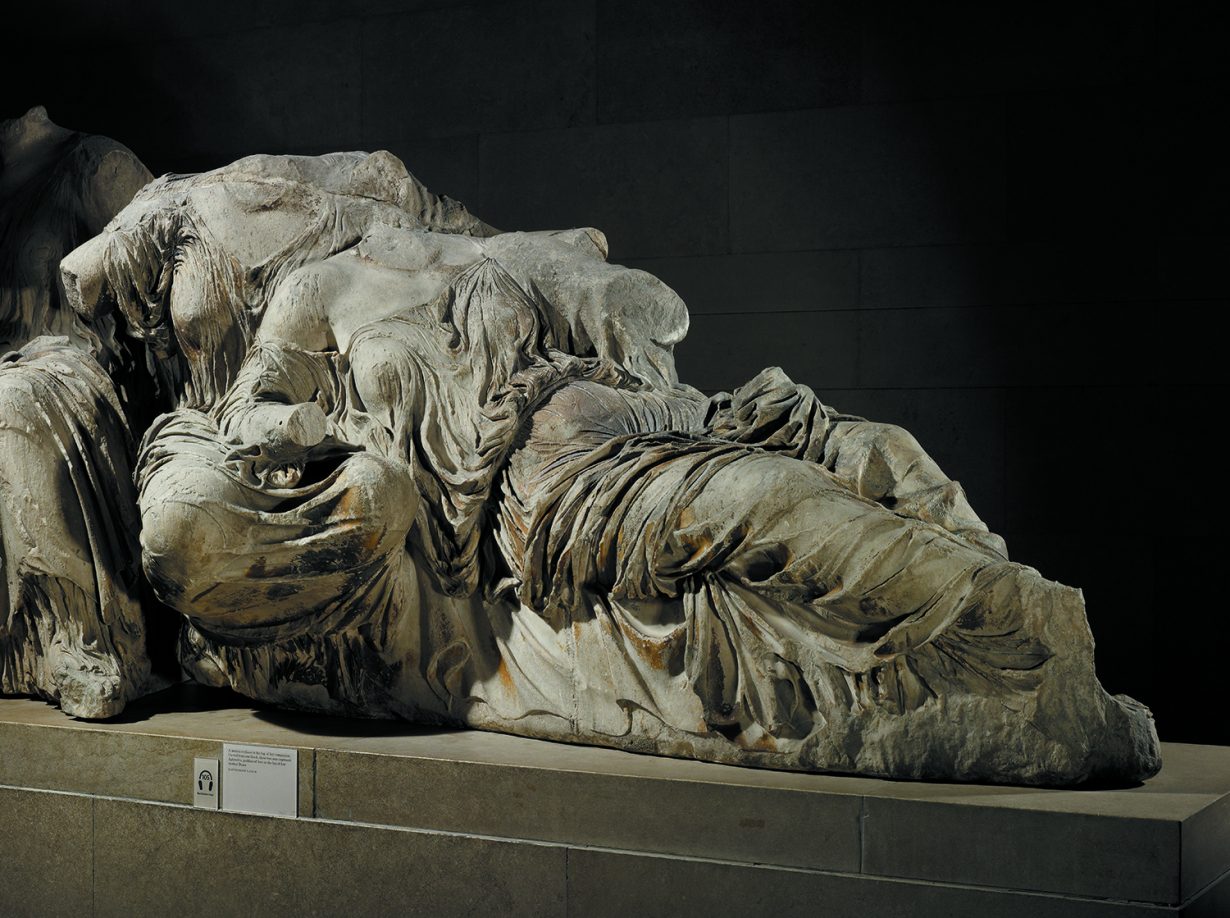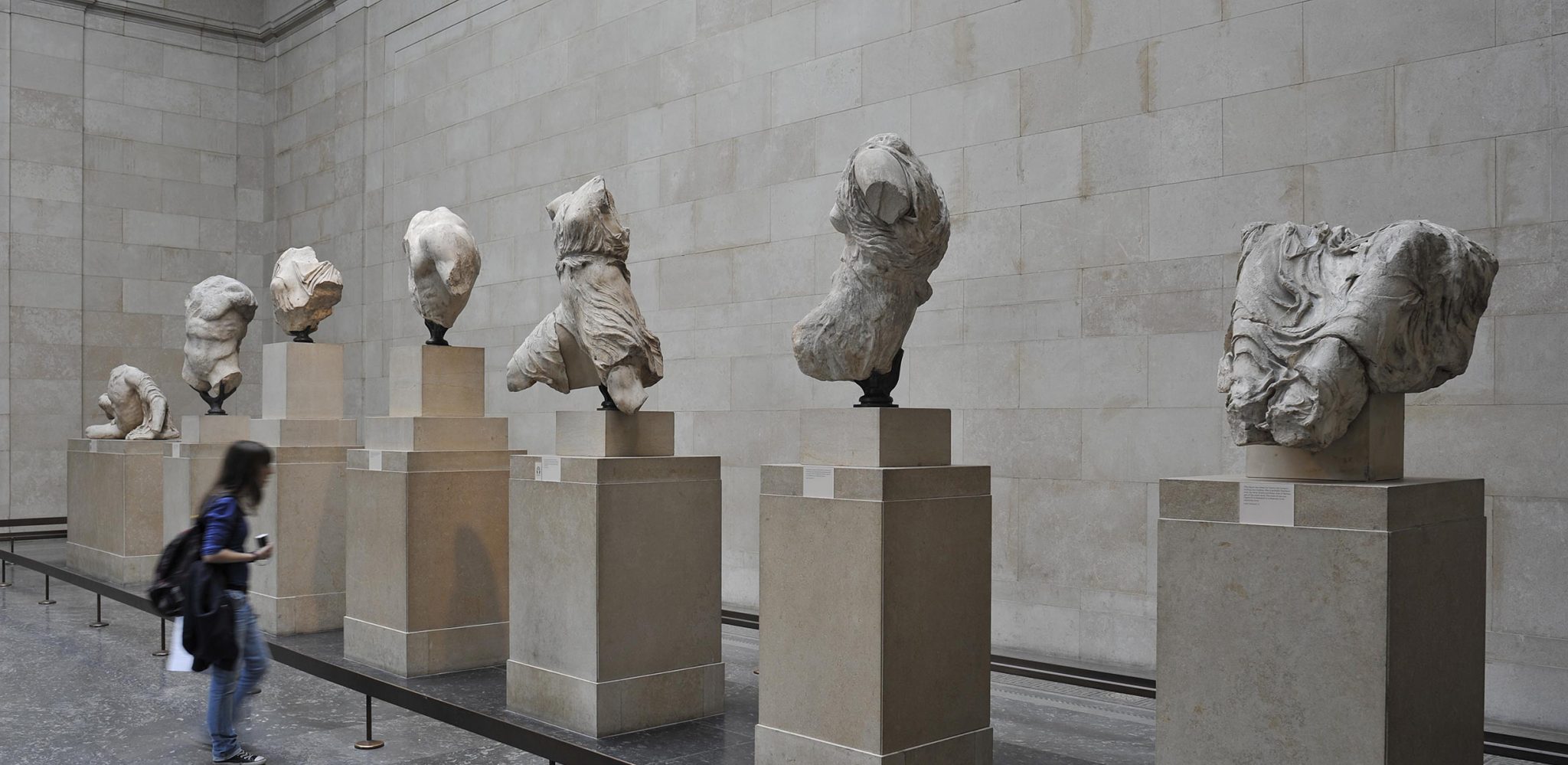The time is right for a ‘post-museum cultural space’, and the British Museum’s Parthenon gallery is the ideal place to start
Though they may be fuelled with a contemporary urgency, arguments about how we handle history are nothing new. Questions of ownership and restitution, to whom culture belongs and the ways in which history is used to construct wider contemporary ideological positions are not only part of postcolonial and postmodern interrogations of culture but have been for some time. They are an intrinsic part of culture itself.
These questions, to take just one example, have been part of the narrative surrounding the Parthenon Marbles for 200 years. Infamously, these were removed from the Parthenon, the most important building in ancient Athens, between 1801 and 1812 by the Scottish nobleman Lord Elgin. As ambassador to the Ottoman Empire (of which Greece was then a part) he was asked by the British Government to explore the possibilities of taking casts and drawings of the sculptures adorning the Athenian temple. Elgin decided that he’d just go ahead and to do it himself. Then decided he’d take actual sculptures themselves, thinking that they’d be great to decorate his home in Dunfermline. Dreams of this domestic grandeur were ruined when divorce meant he had to offer his haul up for sale.

Eventually bought by the British Government in 1816, the marbles became part of the British Museum collection where they were first shown in a temporary room, then moved to a new gallery in 1832, and then as they are now, to a room designed especially to house the marbles. At each juncture in this history there were arguments – about the legality of ownership, whether to display the marbles as archaeology or as art, as a singular entity or amongst other objects, dirty or clean. In other words, the problematics surrounding the sculptures became an integral part of the ancient stones themselves.
It was the gift of Joseph Duveen that ‘resolved’ these issues. Duveen, whose fortune was made as an art dealer selling the collections of impoverished European aristocrats to American industrialists, gifted the museum the funds to build a space to house the marbles. But the money came with strings. And Duveen pulled them hard, appointing his choice of architect, his vision of the space and his understanding of the objects – even to the point of nefariously convincing workmen to scrub the stones as clean and white as possible. With Duveen’s gift, all of the doubts and nuanced questions were banished through a singular act of architecture. The room, he insisted, would be ‘one of the central places of earth’.

It’s never felt like that to me. Sure, it’s big, but the room’s stripped-back monochrome neoclassicism has always seemed boring. If Duveen wanted a shrine, it feels more like a tomb. The set-up asks us to look at the marbles through the narrowest of Duveen-shaped blinkers with a tedious reverence that sucks all the visceral experience out of the air. The room seems at once entirely empty and as if it’s so full you can’t move. Somehow, with the fragments of frieze pinned, propped and plinthed, it’s both impossible to look at them and impossible to do anything else.
But there is something even more weird happening too. An accidental product of Duveen’s diktat on the way the marbles should be shown. With the horizontal friezes displayed along the flank walls of this interior and the sculptures at either end, the whole offers an inverted version of the Parthenon, while pretending to offer an ‘authentic’ experience. The gawping British public now occupy the space that would once, in Greece, have housed the divine. It’s an accidental piece of conceptual architecture that turns architecture (the architecture of the Parthenon itself) inside out: a replica of the Athenian temple remade as a void, as a negative space, recreated and destroyed at one and the same time.

And maybe that is the gallery’s real quality – a heightened emptiness. What the British brutalist architects Alison and Peter Smithson termed a ‘charged void’. There are other replica Parthenons – a concrete one in Nashville for example, that feels both stenographically light and materially heavy – but there are no other ghost Parthenons, as far as I know.
If the marbles, over their two centuries in Britain, had not become so bound up with nationalism, so apparently central to the fabrication of British identity and culture, like so much of the other appropriated, looted or otherwise contested content of our museums, it would be easy just to give them back to Athens where there is a space ready to receive them. But could the emptying out of the Duveen Gallery provide an opportunity to create a space no longer dominated by narratives of imperialism and power? Or, more precisely, the place in which exactly those questions might be interrogated?

Void-as-museum is not a new strategy. Think of the huge emptiness created in the heart of the old Bankside Power Station when it was converted into Tate Modern at the turn of the millennium. Excavating the already large turbine hall created a space in which the scale of old industrial production was transferred to cultural production. And in doing so, it demanded a new kind of art emerge that could respond. Two decades later though, post-industrial cultural spaces don’t have the same spark. But a post-museum cultural space, now that would be something. Perhaps, indeed, it should be the next thing.
Since Tate Modern opened in 2000, the idea of the museum has been propelled by frantic expansionism: vast new acres of galleries, ever-bigger blockbuster shows, demands for ever-increasing visitor numbers and revenue streams. Much of this is propped up by individual benefactors, corporate sponsors with wealth derived from oil, pharmaceuticals, banking and cheap labour. This idea of growth – especially in a post pandemic world – has created structural tensions that threaten the very model of the museum they intend to support. Even in its pomp, the museum as a form of spectacular entertainment, forever chasing something bigger, had become banal. It’s the other things that have begun to capture the imagination of curators – collection centres where the backstage machinations of cultural production are made visible, engagement with communities and places outside of the museum walls are all signs of a new emerging idea of what such an institution might be.

Duveen’s Parthenon gallery, with its intrinsic architectural reversals might be the ideal place to start this experiment, using the architecture of the museum itself as the tool to unravel the embedded ideologies of the museum. Recognising and rejecting, for example, its original ambition to be ‘central’, acknowledging that the institution and the ideologies that created it are now unsure of their place in the world. Released from its role as a patrician trophy cabinet and national treasure, its emptiness could become a space for other ways of reflecting on history.
But equally it might offer an opportunity to explore alternative possibilities of the museum: to reverse the Enlightenment trajectory of the museum as a site for the top-down production and policing of knowledge, as a public space, in which history is a spectacle, disseminating the aura of the authentic, so that the past is used to fabricate the future, a future fixated with objects. Most of all it offers the chance to accept doubt and to project questions into the spaces in which history is narrated. Which, in turn might lead to a different kind of public space in which many more narratives might be explored.
